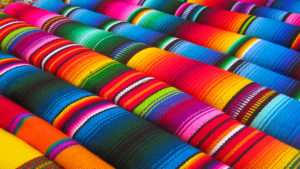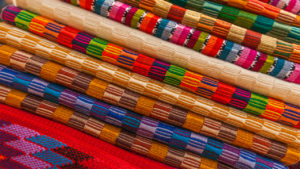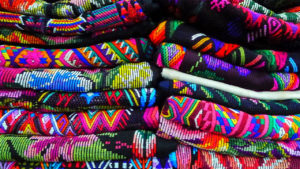Making the Huipil
Today many Maya Woman still weave their own clothes on the backstrap loom of pre- hispanic times, The weaving process begins with the selection of threads. The most popular are mercerized cotton, rayon and acrylic fibers. The artisan craft of dyeing threads is limited ti the technique of Jaspe apprears in some huipiles.
Looms – Backstrap Loom
Before setting up the loom, the weaver uses a warping board to organize the vertical warp threads and to create the “crossover” that separates the odd threads from the even ones. On the loom, the crossover will create the opening through which the weaver will pass the horizontal weft threads from side to side.
Assembling the loom, the vertical wrap is held in place by two sticks, one at either end. The weaver ties one stick to a fixed point. The stick at the other end is attached to a belt that goes around her waist so she can regulate the tension of the warp threads with her body.
The crossover is held in place by the second shed rod. The first shed rod works together with the heddle rod to alternate the position of the warp threads and to open the shed. The weaver inserts the batten in the shed and passes the bobbin with the weft thread back and forth to create the fabric.
Once the loom is set up, she selects the technique she will use to interlace the warp and weft threads, for example: tabby, twill, tapestry, gauze or velvet
Treadle Loom
The Spanish introduced a device that was more efficient than the backstrap loom, the treadle loom. The treadle loom is a stationary machine operated by pedals. It requires specialized tools such as the creel, the vertical warper and a spinning wheel. Assembly and operation are complex, requiring specific knowledge and skills. Nonetheless, weavers on this machine use several of the techniques described for the backstrap loom
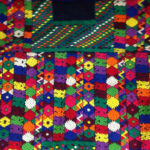 Previous Post
Previous Post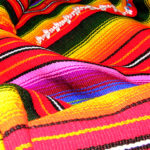 Next Post
Next Post